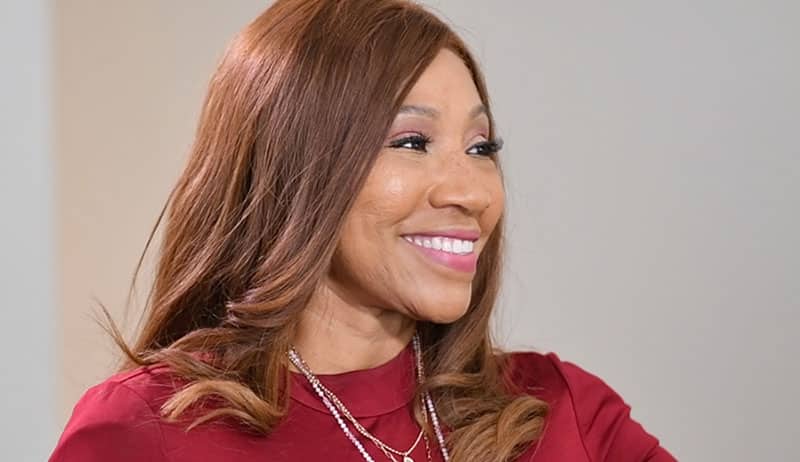4 ways CEOs can make diversity come alive

The evidence gets clearer every year: diversity pays. You hear it from academia: “Diversity is associated with increased sales revenue, more customers, greater market share, and greater relative profits,” according to the University of Chicago. And it’s the conclusion of top consultants: “Top-team ethnic and cultural diversity is correlated with profitability,” as found in on-going research by McKinsey.
Still, despite continually accumulating proof of the benefits, diversity, and inclusion (D&I) remains a challenge for many corporations. For instance, the Washington Post recently reported that “82% of firms with all-male executive officers found places for women on their boards but not at the top of their management teams.”
With all that in mind, I sat down with Cheryl Grace, Senior Vice President of Strategic Community Alliances and Consumer Engagement at Nielsen, one of the companies that is consistently found at the top in rankings of effective diversity and inclusion. She and her team aim to help clients better understand a diverse world. Here’s a brief summary of some of her insights on how CEOs can take a more effective lead in making diversity and inclusion a reality in their firms.
- First, deal with that four-letter word
Grace says that there’s one stumbling block that must be removed before progress can be made. “You have to address the F word, fear. When someone is afraid to ask a question because of how they’ll be perceived, then questions are left on the table – unanswered, unspoken – and assumptions get made. Once assumptions are made you end up with strategies that are way off point. When you eliminate that fear, you can have those courageous conversations. You’re not left with assumptions – you’re left with honest dialogue that can help move the needle forward.” - Nurture a culture of adaptation, not assimilation
Just prior to interviewing Grace, I’d heard Andres Tapia, from Korn Ferry, say of D&I that “a strong culture is the enemy of inclusion,” that its emphasis on assimilation over adaptation is inherently at odds with inclusion. I asked if she agreed.“That rings incredibly true. What I’ve seen over the course of my tenure in corporate America is that the more adaptable a CEO is, the better level of work he’s going to get from his associates, who are free to be themselves – especially when it comes to multicultural associates or employees. If collectively we’re talking about how to change our product, our service, et cetera, through multiple lenses, it’s only going to get better if I feel comfortable in that space. But if you expect me to assimilate, and to share my information, insights, and experiences so that they coincide with yours…then you don’t really need me in the room.”
- Create a safe space
More than once during our interview, Grace spoke of the need to have “courageous conversations” around diversity and differences. But even the need for courage points to a lack of safety around the issue. She said,” Having diverse people at the table means nothing if they’re not comfortable speaking up. And having people at the table who look like me but think like you doesn’t drive change either. If my experience, through my brown eyes, is different than the experience that you may have had through your blue or green eyes, and if I’m in a safe enough space to share that with you, you’re going to benefit.” - Drill it down from the top
Cultural transformation and the sense of safety it should bring do not, however, simply well up from the root of an organization. As Grace puts it, “[Effective diversity initiatives] generally come from the diversity team drilling up – and that’s a hard swim, going upstream against the current. It’s very difficult for us to drive that message up.”Consequently, leadership – especially the CEO – needs to own the commitment to diversity, and drive it through the organization, from the top down. Grace gave the example of how Nielsen’s new CEO, David Kenny, has taken on both the CEO and Chief Diversity Officer roles. She said, “He really understands that he can’t do it by himself. However, it’s important for him as a CEO and Chief Diversity Officer to start with his team and drill it down, just drill it down. So, his direct reports have no choice but to also drill it down to their direct reports. But that’s something not a lot of CEOs do.”
The Harvard Business Review, analyzing performance research related to D&I, concluded that “…homogeneity imposes financial costs and diversity produces financial gains.” Are you taking the steps necessary to realize that financial gain for your organization?
Have you read?
Best CEOs In The World 2019: Most Influential Chief Executives.
World’s Best Hotels For Business Travelers.
Richest People In The World.
Best Countries To Invest In Or Do Business.
Countries With The Best Quality of Life.
Bring the best of the CEOWORLD magazine's global journalism to audiences in the United States and around the world. - Add CEOWORLD magazine to your Google News feed.
Follow CEOWORLD magazine headlines on: Google News, LinkedIn, Twitter, and Facebook.
Copyright 2025 The CEOWORLD magazine. All rights reserved. This material (and any extract from it) must not be copied, redistributed or placed on any website, without CEOWORLD magazine' prior written consent. For media queries, please contact: info@ceoworld.biz








